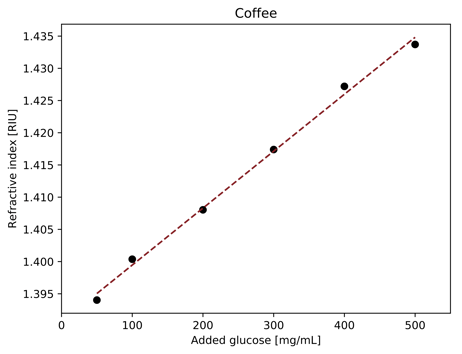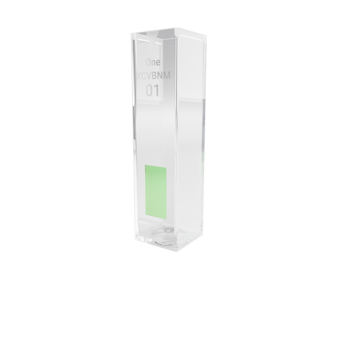Coffee and Sugar
NanoCuvette™ One offers a quick and easy way of detecting sugar in your coffee.
Download pdf here.
Coffee
Coffee is a darkly colored drink, brewed on roasted coffee beans from the Coffee plant. It originates from tropical Africa, but is now cultivated in several equatorial countries across South-America, Asia and Africa, and is one of the most popular drinks in the world. Coffee can be prepared and served in a variety of ways. It is most often served warm, but may also be served iced. Some people take it with milk or cream, others with sugar.
Sugar detection
Sugar content is typically determined based on refractive index measurements. For pure solutions of a known compound the refractive index measurement can be used to determine the exact concentration of the specific sugar. For mixed solutions with high sugar content, such as coffee with sugar, the refractive index measurement can be used to detect the sugar and give an approximate measure of the sugar content.
Principle
Conventionally a specialized refractometer has been required for the refractometric measure of sugar. However, with the innovative NanoCuvette™ One, a nanosensor is installed in a cuvette, allowing measures of sugar to be carried out in a standard spectrophotometer. Because sugar does not absorb light in the UV-visible spectrum, traditionally, spectrophotometers have been unable to measure sugar in coffee.
Safety precautions
This method does not entail any safety precautions. Please refer to common laboratory practices.
Measurement

Figure 1. The sensor response, shown as refractive index, is linearly proportional to sugar concentration, which the free software will display.
- Materials and apparatus
The only apparatus required is a standard spectrophotometer and a computer with internet access. For each measurement a NanoCuvette™ One is required. - Sample preparation
Coffee is prepared according to standard methods, and 1 to 500 mg/mL sugar is added. - Measurement procedureThe spectrophotometer and computer are switched on and the free NanoCuvette™ One software is opened. For each sample a new NanoCuvette™ One is used according to the software guidance. Following the last measurement the software will present the data as a variable of absorbance or refractive index, depending on the experimenter’s preferred choice of representation (Figure 1).
 Figure 2. NanoCuvetteTM One measures refractive index and absorbance on the same sample, using only a standard spectrophotometer and the free NanoCuvetteTM One software.
Figure 2. NanoCuvetteTM One measures refractive index and absorbance on the same sample, using only a standard spectrophotometer and the free NanoCuvetteTM One software.
Contact
www.nanocuvette.com